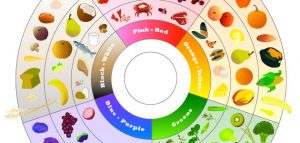Although content marketing is a key part of any successful ongoing marketing strategy, making sure your content really hits the mark is especially important when it comes to SaaS marketing.
SaaS products and related services are often complex, tech-heavy, and crucial for future customer productivity. Additionally, most SaaS customers make purchasing decisions for their entire company. Therefore, longer selling cycles are typical.
As is the case with most B2B business transactions, the average SaaS sale isn’t an open-and-shut type of deal. As is typical with most B2B transactions, the average SaaS sale isn’t a simple, open-and-shut deal. Leads require skillful nurturing and guidance at every step to win trust. Content plays a huge role in this process. Here’s what you need to know.
- The Cornerstones of SaaS Content Marketing: Building a Solid Foundation
- Content That Converts: Crafting Strategies for SaaS Growth
- Engaging Your SaaS Audience: Insights and Best Practices
The Cornerstones of SaaS Content Marketing: Building a Solid Foundation
Effective SaaS content marketing is about taking classic content marketing best practices, strategies, and approaches and adapting them to meet the unique needs of SaaS brands. Among other things, SaaS marketing content needs to be effective:
- Provide customers with the information and data they need to make an informed buying decision
- Win the trust of B2B buyers in search of the best possible solutions for their companies
- Deliver genuine value via meaty, educational content that helps buyers make decisions
- Nurture leads through complex B2B sales cycles (which can last up to a few months)
As with standard content marketing, SaaS content marketing can (and should) include many different content types. Examples include, but are not limited to, blog posts, how-to videos, case studies, ebooks, and whitepapers.
Why content marketing is vital for SaaS
“SaaS content marketing strategies, when done right, can deliver your voice loud and clear right at the eye of that storm. They let you resonate over competitors’ noise and reach ears that matter — the ones attached to potential clients eager for solutions.”
– Julia McCoy, entrepreneur
In the SaaS sector, making a sustainable connection with a customer is a crucial part of eventually closing that sale. A content marketing campaign that pivots on helpful, informative content helps facilitate those connections on a long-term basis.
Solid SaaS content also helps break difficult concepts and services down in a digestible way. This helps customers picture a company’s products as part of their professional present and future.
Last but not least, the right SaaS content has the power to position your brand as a major leader in your industry. The right approach to content can make your brand name synonymous with the concept of authority content in your field.

Content That Converts: Crafting Strategies for SaaS Growth
Ready to learn the basic building blocks of a truly effective SaaS content marketing strategy? Take a look at the following expert tips.
Identify your audience
SaaS products aren’t like bread or toilet paper in that your target audience is everyone. Chances are your brand does something very specific and develops products that cater to a certain type of business, so you want to focus your efforts on attracting those people.
Consider who the ideal decision-makers for such businesses might be. What industry are they in, and what is their job title likely to be? How old are they, what is their income level, and where are they likely to go online in search of information?
Once you know who you’re targeting, you can start considering what content types would be most helpful for them. Put yourself in their shoes. What would you be looking for in their position?
Consider customer pain points
Every corporate decision-maker out there looking for information and vetting SaaS products has a problem or two they’re looking to solve. They’re also likely to run into obstacles during their search for solutions. It’s your job as a marketer to figure out what those problems are and solve them.
Consider creating a customer journey map and using it to help you guide yourself through each step of your customer’s buying process as they progress through your marketing funnel. Think about the answers to questions like the following to identify possible pain points to address:
- What type of issue is your customer looking to solve by buying SaaS – labor, time management, technical, emotional, or something else?
- Is it 100 percent clear from your sales content how your product addresses the customer’s business needs?
- Are there potential issues a customer might have during the buying process?
- Is your onboarding process intuitive and user-friendly enough?
Zero in on prime keywords
According to Mike Sonders, around 53.6 percent of SaaS sales traffic starts with a direct search for key information. Some of those customers may not even know they’re looking for SaaS products yet and are simply searching for solutions to key pain points.
Others may already be considering you as a possible solution and looking for product reviews or other information about your brand. Still, more may already own or use your product and want some pointers on how to get more out of it.
Consider what key search terms all of those people might type into a search engine to find products and content like yours. Do thorough keyword research to settle on some solid options to suit all of them, and start developing content to match. Keyword research tools like Google Keyword Planner or Ahrefs can help.
Set your content goals
Once you know who you’re targeting and what keywords you’ll focus on to help them find your content, it’s time to set some goals for your campaign.
Keep in mind that good business goals are always SMART – specific, measurable, achievable, relevant, and time-bound. What are you looking to accomplish with your next SaaS content marketing campaign? Are you looking to raise conversion rates, increase email sign-ups, drive traffic, or something else entirely?
Choose associated key performance indicators (KPIs) to track success, and don’t be afraid to think beyond the obvious ones (like web traffic). Examples like the following make great SaaS content marketing KPIs, as well:
- Number of sign-ups for demos or free trials
- Lead quality
- Lead conversion rate
- Engagement metrics (social shares, dwell time, etc.)
- Customer acquisition cost
Check and analyze your campaign performance often, and tweak your approach as needed.
Create a content production and distribution strategy
Once you have your target keywords and KPIs squared away, you can start putting together dynamic, effective content your ideal customers will love. Start by coming up with a content creation procedure that your entire team is on board with.
Project management tools can help you keep track of who will take care of each phase of content production, including research, creation, editing, and publishing. A content calendar filled out well in advance can help you keep track of your various marketing channels and keep them consistently full of timely content.
Come up with a distribution strategy, as well. In addition to knowing where you’ll publish your content (and when), consider whether you’ll also organize it via an index. Will all of it be freely available, or are you planning some gated content, as well?
Engaging Your SaaS Audience: Insights and Best Practices
Once you put your SaaS content marketing strategy into play, it’s time to perfect it by implementing some best practices. Keep the following tips in mind when brainstorming ways to engage your audience and maximize your return on investment (ROI).
Combine SEO with authority
Some SaaS marketers think focusing on thought leadership is the most effective way to create highly engaging marketing content, while others positively swear by SEO for SaaS instead. However, the ultimate sweet spot lies somewhere in the middle.
Authority-building and SEO are equally important for content that really delivers, so aim to balance the two. Without solid SEO, you won’t see the organic growth you want. But without thought leadership, you won’t develop the industry authority you need to win your buyers’ trust.
Pay attention to structure
Many potential buyers who land on your content won’t read it from top to bottom. Instead, they’ll skim it for the information they came there looking for, possibly going back for a more in-depth second look later. The easier you can make it for buyers to do this, the more effective it will be for both engagement and SEO.
- Use headings, subheadings, images, videos, etc. to help organize and break up your content for easy readability.
- Use natural language your visitors would use to perform a search, either traditionally or via voice search.
- Leverage internal and external links to help add value to your content.
- Keep paragraphs and sentences short. Use language that helps simplify difficult concepts and make them digestible for readers.
- Update your best content frequently to keep it relevant, fresh, and search engine-friendly.
Add interactivity to the mix
People learn more from experiences they feel part of than they do content they simply absorb as an observer, and this is the case with SaaS marketing content, too. Adding dynamic interactive content to your marketing strategy brings benefits to the table like the following:
- Better retention of learned materials
- Personalized experiences that resonate with buyers and help them feel understood
- Boosted brand loyalty and increased trust in that brand
- Ethical collection of valuable data about your leads and customers
- Differentiation from the competition
- Higher overall engagement rates
Some examples of great interactive content ideas for SaaS brands include personalized quizzes or assessments, augmented reality-enhanced content, interactive infographics, custom calculators, contests or giveaways, and interactive surveys.
Assemble a team of expert content creators
Staying ahead of the game with an effective SaaS content marketing strategy isn’t a one-person job. While it’s fine if you want to personally contribute to your ongoing content cache as a special authority, you should outsource a good portion of your content creation tasks to other people, so you can focus on other aspects of managing your brand.
If you have an in-house content marketing team, some of your content tasks can definitely go to them. But don’t sleep on the idea of assembling a team of freelance content creators who specialize in dynamic, effective SaaS content, B2B marketing, etc. Always connect with talent from trusted platforms like WriterAccess to ensure results you’ll love.
Ready to take the next step and craft a winning SaaS content marketing strategy guaranteed to make your ideal customers sit up and take notice? Start assembling your dream team of SaaS content experts today when you sign up for your free 14-day WriterAccess trial. Browse, vet, and connect with some of the best and brightest content stars in the industry.










